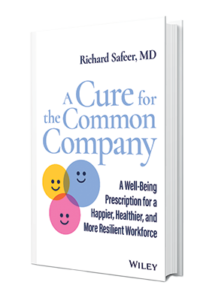How Norms Work on Us and Our Organizations
If you went to college or have ever watched any movie about the college experience, you are likely familiar with the culture of drinking – and I’m not referring to coffee. Even if you weren’t inclined to drink alcohol, it’s possible you held a cup in your hand and occasionally lifted it to your lips to give the allusion that you were part of the group. You were cool. You were accepted. Not drinking would potentially mean you were on your own, or at least in a quandary as you tried to find the few like-minded individuals whose values deviated from those of the general culture. These nonconformists avoided an unhealthy norm that landed some college students in the ER, some on probation, some kicked out of school, or worse. But it wasn’t easy. Socially, it made things difficult, even stressful.
Norms are established much earlier in life than college, though. Even in early childhood, we prioritize being accepted by our peers, and we recognize that norms help. In one study, preschoolers were observed acting out punishment on puppets, their make-believe peers, who weren’t “playing” according to the prescribed norms. Even when kindergarten students had just observed their peers give the wrong answer to a picture book with cartoon animals, they were more likely to give the same incorrect answer than when students were asked questions separately from onlookers. Privacy blunted the power of conformity. When they know they’re not being observed, children are also less likely to conform to a norm. It appears that behaving in a collective manner, via norms, is innate! But what is the biological imperative?
In any culture or society, we all experience a personal benefit to conforming to a group norm. “Social needs are treated in much the same way in the brain as the need for food and water.” Our brains are constantly looking to maximize rewards and minimize threats in social situations, to get what we think we need, and to avoid the things we don’t want, and conformity helps us do that. To learn more, read about David Rock’s brain-based SCARF (status, certainty, autonomy, relatedness, fairness) model for leading and engaging employees, based on the decades of research into social neuroscience by psychologists, anthropologists, and neuroscientists.
You probably work with or have worked with somebody who regularly defies the norms in your team or organization. What kinds of words have been used for that person? “Difficult”? Even “troublemaker”? And what happens if that person defies too many norms for too long? They get looked over for a raise or a promotion. Norms are an important construct when we think about the workplace and the behavior individuals adopt to keep their jobs or get promoted. Who is going to buck the group behaviors and attitudes and risk being cast in a negative light? Remember, norms can be healthy or unhealthy, and if people are afraid to defy them, unhealthy norms can have a profound impact on people’s well-being.
The power of norms explains in part why anonymous feedback is so valuable. It allows individuals to break from the norms and share their own beliefs and attitudes. Even kindergarten students get the answer correct more often when given the opportunity to answer in private. Don’t underestimate the importance of giving employees the opportunity to offer candid feedback without repercussion if you are trying to understand the truth of your workplace culture. It may even be worththe cost of hiring an outside company to run the survey or interviews.
Because they are so powerful, norms can have a profound impact on the organization’s wellbeing. Cultural forces “interpret” an organization’s policies and official procedures and heavily influence whether they work as intended. So, for example, the written policy may be to have a half-hour lunch break, but the cultural norm could be fifteen minutes. The written value statement might include “respect,” but the norm might be for the leaders to be demanding, condescending, or rude. The official HR policy might be that new parents can take three months of leave, but the norm might be six weeks – and anybody who takes more might feel judged or feel as though their job is at stake.
The reverse is also true: everyday healthy norms are helping organizations achieve goals, support, and engage employees, and align policy and reality. Look at Johnson and Johnson, a pioneer in investing in the health and well-being of their employees around the world. They have focused on consistently building norms that support their culture and values and align with their policies. For instance, they were one of the first companies to become tobacco-free. In 2020, they made healthy eating a priority and set a policy to ensure that 80 percent of the food offered at their facilities around the world is healthy. The result is that J & J has one of the healthiest workforces in the world. “In 206, 30% of people national had hypertension, compared to just 9.25 of the Johnson & Johnson population,” and their healthcare costs are 2 to 3 percent lower than other large corporations, which translates into hundreds of millions in savings.
Click here to read the full article from Johnson & Johnson.

Excerpted from A Cure for the Common Company, Chapter 5, published by Wiley, January 2023


